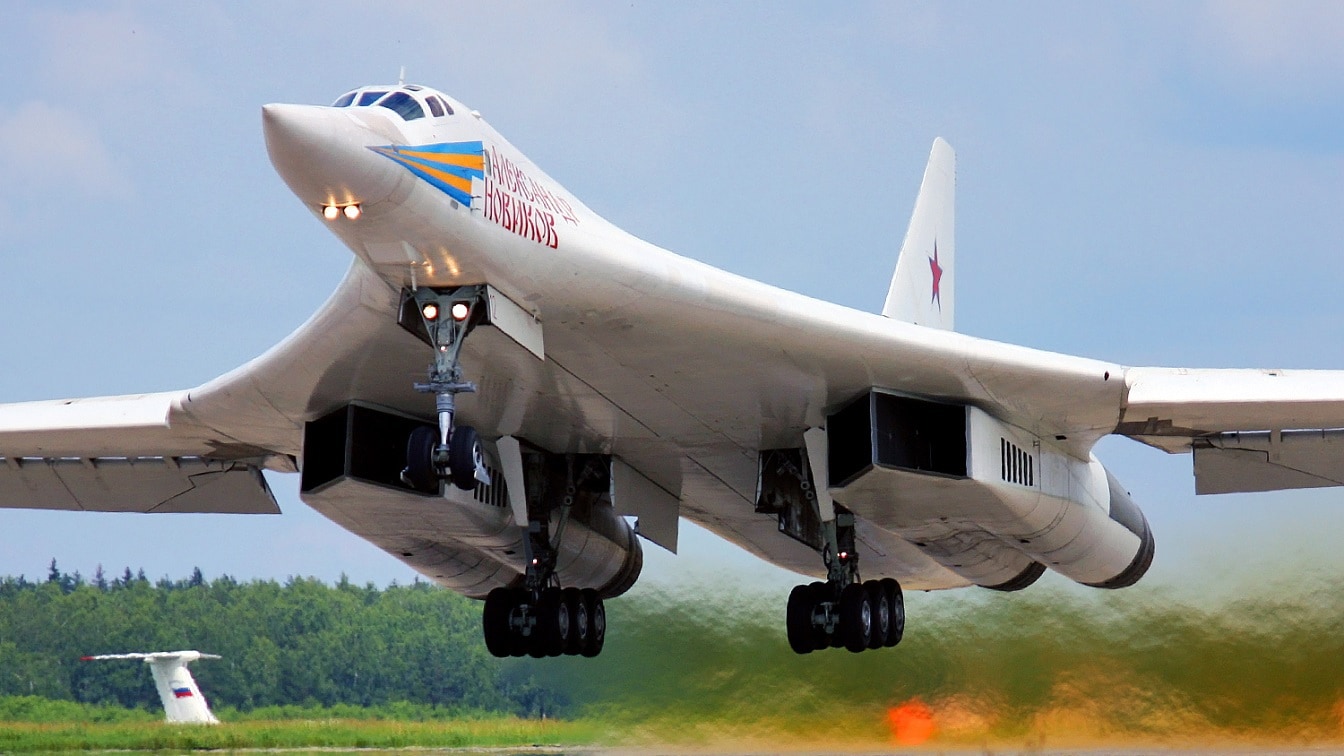Russian Bombers On the Sidelines in Ukraine? – Russia has one of the biggest bomber fleets in the world. There are an estimated 137 Tu-22M3 Backfire, Tu-95 Bear, and Tu-160 Blackjack bombers. These airplanes can carry cruise missiles, air-to-ground missiles, precision-guided bombs, and unguided bombs. This is enough to destroy numerous military targets in Ukraine, but it is not clear if these powerful airplanes are flying over the country and attacking or conducting stand-off missile launch operations from Russian air space.
Here is what we know at the moment when it comes to Russia’s use of its mighty bomber fleet and the weapons it could employ in combat against Ukraine:
Stand-off Missile Use Is the Name of the Game
This could be because the Russians have not achieved air superiority over Ukraine. But these bombers can fire stand-off missiles out of the reach of enemy air defense systems and fighter interceptors. The Russians have deployed Tu-160s that launched Kh-101 cruise missiles in Syria beginning in 2015. The Tu-22M3 was also utilized to take out targets in Syria. Russian bombers flew over Belarus before the war in Ukraine.
Watch Out for Russian Cruise Missiles
The Kh-101 cruise missile is scary good. It has a 900-pound warhead and is accurate to a few dozen feet from targets. Its range is up to 3,000 miles and it flies low to avoid enemy radar. This cruise missile is nuclear-capable. Tu-95 propeller-driven bombers can also carry the Kh-101 cruise missile. The Tu-95 has been described as Russia’s missile truck and would likely stay in Russian air space for stand-off launches.
“Even the basic Kh-101 would allow the (Tu-160) Blackjack to remain deep within Russian air space and still be able to strike any target in Europe,” Douglas Barrie, an analyst for the International Institute for Strategic Studies in London, told Forbes.
These bombers have the entirety of Ukraine within range. They can fly in Russian air space, fire missiles, land, re-arm, and do it again, according to defense writer David Axe.
Russian Bombers Reportedly Active During Initial Invasion
An unnamed U.S. defense official said that 75 Russian bombers fired cruise missiles and other types of air-to-ground missiles in the early days of the war. These sorties were targeted at Ukrainian command and control centers, radars, anti-aircraft systems, plus fuel and ammunition dumps.
Tu-95s Were Not Shy Before the War
Before the war in Ukraine, the Russians were brazen with their bombers, even flying two Tu-95s close to Norwegian air space in early February. Norwegian fighters had to scramble to intercept the flight. The United Kingdom had an experience with Russian bombers before the invasion as well. Four Tu-95s flew close to the UK on February 2 and British fighters had to intercept them and escort them away from the air space.
Russian Ground Forces Marking Targets for Bombers
Russian bombers are reportedly coordinating with ground forces for bomb damage assessment and identifying targets. Russian soldiers are attempting to mark priority targets in Kyiv with red paint to help guide bombers. However, since Russian cruise missiles are already radar and inertial-guided, this target painting is probably more for attack helicopters and low-flying fighters.
New Stand-off Tactics Are Becoming Standard Procedure
The Russian Air Force is likely to continue to go after Ukrainian surface-to-air missile systems with its bombers in order to achieve air superiority for its fighters. Meanwhile, the bombers will probably launch cruise missiles and other stand-off munitions from the safety of Russian air space out of range of the Ukrainian fighters and air defenses. This tactic is an important development in modern aerial combat. Bombers are increasingly used as stand-off missile trucks, and it appears the war in Ukraine will continue to have Russian bombers fly in Russian air space and attack from home. They will only be limited by the number of cruise missiles that Russia has in its arsenal.
Now serving as 1945’s Defense and National Security Editor, Brent M. Eastwood, PhD, is the author of Humans, Machines, and Data: Future Trends in Warfare. He is an Emerging Threats expert and former U.S. Army Infantry officer. You can follow him on Twitter @BMEastwood.

